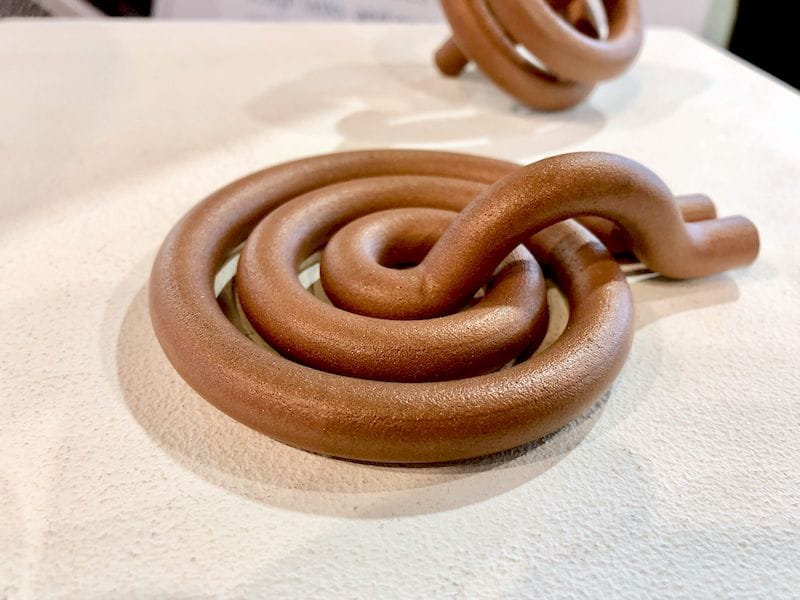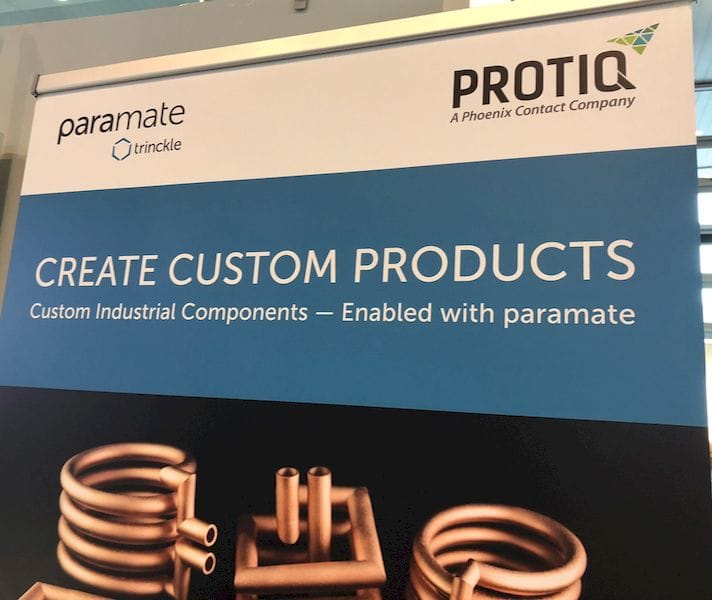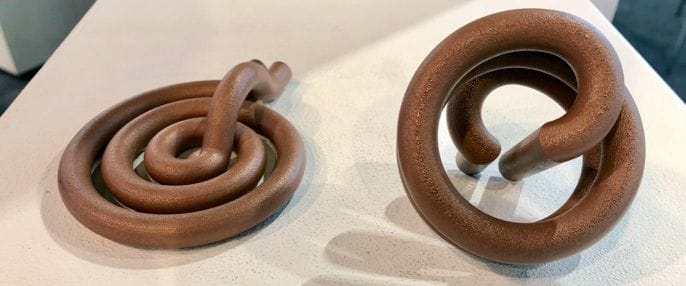
When you look deeply, you find things.
We’ve been following Trinckle for some time now, and it seems they are on the verge of huge growth. Why? I believe it’s because they’ve hit on a rather difficult set of industrial problem that they are able to solve for clients.
But what is Trinckle? They are a software company that develops specialized generators for categories of 3D models. What does that mean? Let me explain further.
Let’s say that you have a need to create a product or part that occasionally varies in design. Perhaps it has three flanges instead of two, or has somewhat different dimensions in certain circumstances. You could pull out the CAD tool used to develop the 3D model and go to work laboriously changing the design, but that has a couple of problems.
It’s often very complicated to make even simple changes as there is a chain reaction throughout the entire design. Changing one aspect can affect many others. Secondly, not everyone is able to operate 3D CAD tools and you may require an expensive specialist to get it done. This obviously does not work if the trigger for the change comes from the workshop floor or an order system; there’s few CAD experts handy.
Enter Trinckle, whose software can make instantaneous changes on a “base” design by merely tweaking a few design parameters. One such generator we’ve seen from them is a robot hand system. The operator simply specifies the number and type of “fingers”, if that’s what they’re called on robots, and the Trinckle system generates a complete, functional 3D model for that.
These type of generative systems have been around for a while, and in fact a few years ago there were several companies developing them. However, at the time the focus of most of them seemed to be consumers. The idea was that a consumer would be presented with a web page where they could quickly customize a product, which would then be 3D printed.
That’s not a bad idea, but I think the problem with it was that the turnaround time and pricing for 3D printed goods, automatically generated or not, was far too much for consumer goods. Thus I don’t see many of these generative software companies around anymore.
That said, Trinckle is still alive and well. Why? I think it’s because they’ve instead focused on industrial uses of their generative system, such as the robot hand mentioned earlier.
But here’s where the magic happens: in their quest to find more such applications, their discussions with industrial users revealed that this turns out to be a very common issue. And these manufacturers are extremely interested in solving it with Trinckle.
We saw one recent example of this phenomenon at FormNext, where we were shown a copper inductor. It turns out that inductors, an electrical device, need to be matched with the surface contour of the part they’re operating on, and thus you need to constantly change the design of the inductor.

This is precisely the problem Trinckle meant to solve, and through a partnership with 3D print service PROTIQ, they were able to provide their client with an endless supply of constantly reshaped copper inductors.
Their experience with this manufacturer has led them to believe this scenario exists almost everywhere, and it’s possible their company may explode soon as the manufacturing industry catches on.

And it’s not just the customers. We’re told that last week Trinckle won the pan-European EIT Digital Challenge, competing against many other startups to win €50,000 (USD$60,000). They’re now working with an accelerator program to take their concept global.
We all believe in a 3D printed future, with vast “anything factories”, each filled with gleaming 3D printers of incredible capabilities. But that vision cannot come true unless there are effective 3D designs to print on them, and that’s where Trinckle fits into the future 3D print ecosystem.
Via Trinckle

